It is set to transform Bristol but there are concerns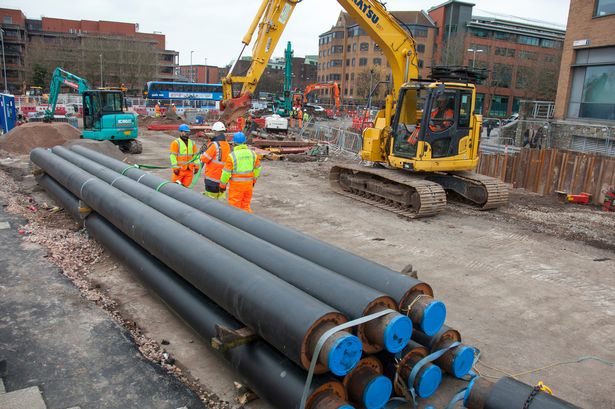 Pipes are installed in Redcliffe for the local heat network (Image: Bristol City Council)
Pipes are installed in Redcliffe for the local heat network (Image: Bristol City Council)
It is touted as the biggest deal of its kind in British history, with a headline figure for the partnership between Bristol City Council and US giants Ameresco put at £1 billion. It’s an eye-watering sum for the city of Bristol to be ‘decarbonised’, but what exactly is Bristol City Leap, how does it work, and what difference is it going to make to Bristol?
Until now the Bristol City Leap project – for the vast majority of people in Bristol – has had little impact. Its £1 billion deal has created headlines and troubled the city’s political twitterers, but in terms of visible change for the city, few would be able to describe who or what it is.
Until now, the biggest, most high-profile project has been the gradual creation of what could end up being a huge District Heat Network, piping hot water to all the new developments around the city centre, St Philips, Redcliffe and Bedminster. But last month, City Leap reached the outer parts of the city, with the news from Bristol Live that a solar farm was to be created on a field on the edge of Withywood.
For perhaps the first time, many people in the city sat up and took notice of the Bristol City Leap project. City Leap said they have had good feedback so far from people around Withywood, but hundreds of people – who may or may not live nearby – signed a petition against the idea of a solar farm in the horses’ paddock at the bottom of the Dundry Slopes.
The City Leap partnership deal was signed by former mayor Marvin Rees in a blaze of publicity at the start of 2023. It was – and still is – proclaimed to be a ‘world-first, game changing approach’. The figures were huge: £1 billion over 20 years, £424 million in the first five years, and £61m in ‘social value’ to benefit the city over the same five year period.
The pitch also used all the buzz phrases from the 2020s – decarbonisation, ‘transformative boost’, ‘renewable energy’. But news about City Leap has been short on detail, and many are still in the dark about what exactly it is supposed to do, who it is and how, exactly, it works.
READ MORE: Large solar farm to be built on South Bristol fields that will power hundreds of homesREAD MORE: Former Bristol Mayor Marvin Rees’ company paid by firms who signed major contract while he was in office
James Sterling, the City Leap’s communications and social value manager, explained that the project is actually many much smaller projects, tied together by a ‘strategic partnership’. Those projects can be divided very roughly into two kinds.
The first kind are the ones where something new is created – like the solar farm at Withywood or the District Heat Network under the roads of Redcliffe. Here, in basic terms, the council has the land, Ameresco has the expertise and investment.
So at Withywood, and the half a dozen other solar farm sites that will be proposed in the coming months, Bristol City Council is leasing the land it owns to City Leap, Ameresco is installing the solar farm, and then keeping the money it gets paid when the electricity those panel generate is sold.
Also tied into the deal is the agreement that Ameresco gives a cut back to the local community and the council as part of a ‘social fund’. In Withywood, City Leap will work with the community to decide where that money might be best spent.
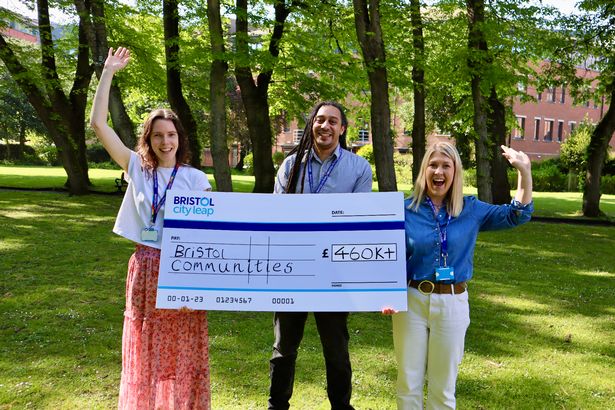 Representatives from Bristol City Leap celebrate awarding over £460,000 to local community groups as part of the city’s green energy initiative. James Sterling is in the centre.READ MORE: Hundreds of homes in Bristol to get thousands of pounds to improve energy efficiencyREAD MORE: Seven sites shortlisted for solar farms or wind turbines to generate electricity in Bristol
Representatives from Bristol City Leap celebrate awarding over £460,000 to local community groups as part of the city’s green energy initiative. James Sterling is in the centre.READ MORE: Hundreds of homes in Bristol to get thousands of pounds to improve energy efficiencyREAD MORE: Seven sites shortlisted for solar farms or wind turbines to generate electricity in Bristol
The second major strand of the City Leap partnership is the ‘decarbonisation’ of existing infrastructure in the city – most notably Bristol City Council’s council houses. The council applies to the Government for grants to make the 27,000-plus council homes better in terms of the environment.
That could be better insulation, solar panels on the roof, better heating systems or making the homes more energy efficient. For some schemes, the council applies for the Government grant, but having an arms-length ‘City Leap’ partnership means that there will be other grants and funding that City Leap can apply for that the council wouldn’t be eligible for.
City Leap then acts as a more traditional contractor hired by the council to do that work – and there’s a lot of it to be done, with the council’s housing stock in such poor condition that the Government intervened recently to put the council in special measures, with a damning report about the state of repair generally and the way the council organises that work.
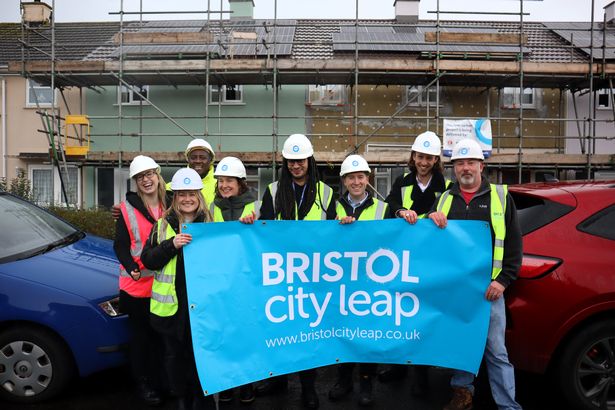 Bristol City LEAP insulation
Bristol City LEAP insulation
That work has started in earnest. “It’s genuinely so rewarding to see the results of that,” said James. “We see people who’ve lived in council homes for decades that have never been properly or efficiently heated, or are draughty or damp.
“We go in there and it’s incredibly disruptive for a couple of weeks, but once it’s done it makes a genuine difference – these homes are warm, insulated, with cheaper bills. One resident was telling us the other day that they hadn’t realised how quiet it would be – all the ambient noise from traffic and outside has gone, because their home is properly insulated for the first time,” he added.
The project has completed 500 homes so far, with thousands and thousands more still to do.
There is a third strand – which City Leap hasn’t really got into yet – which is slightly more optional. If there is a big development project – like, for instance, the plans for a transport hub and new ‘Southern Gateway’ at Temple Meads, then City Leap would effectively get first refusal to be the people to make sure whatever is created there takes all the opportunities for renewable energy – solar panels on the roof, and so on.
READ MORE: Serious failings in Bristol’s council housing says Government regulatorREAD MORE: How Bristol’s new District Heat Network turns harbour water into a hot shower
Then there is a council drive to create on-street charging points for electric vehicles, so City Leap and Ameresco are the ones exploring how that might be possible.
“Built into all of this is the idea of social value too,” said James. “Obviously Ameresco are here to make a profit too, but built into the strategic partnership is that every project adds some kind of social value. With the solar farms, it will be directly beneficial to the local community – for every kilowatt of electricity generated, money will go to the community,” he added.
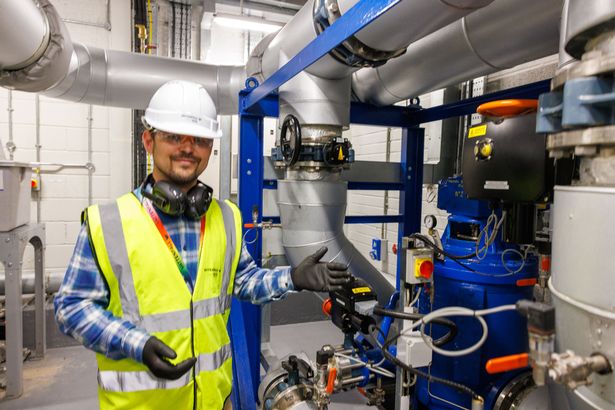 Operations manager Martin Rouse at the Vattenfall District Heat Network centre in Castle Park(Image: PAUL GILLIS / Reach PLC)
Operations manager Martin Rouse at the Vattenfall District Heat Network centre in Castle Park(Image: PAUL GILLIS / Reach PLC)
It’s a complicated, detailed and complex web, this ‘strategic partnership’. Locking it in for 20 years was deliberate, so that it could be something that survives the changing whim of politicians and elections. Overall, the partnership has a huge amount of terms and conditions, targets and rules that both the council and Ameresco have to abide by and meet, and every individual, smaller deal, is the same.
But the complexity – and the uniqueness of the strategic partnership – has led to concerns and scrutiny. Effectively, what former mayor Marvin Rees did in 2022 and 2023 was to outsource the council’s entire department which was responsible for making the council and Bristol more generally, a greener, more sustainable city.
Around 35 to 40 members of the council staff were transferred to work for City Leap, TUPEd across to the new organisation. James Sterling, who was one of those in charge of the council’s green initiatives before City Leap, was one of them. He is now employed by Ameresco.
“Some people sitting in this office work for the council, some for City Leap, some for Ameresco,” said James. “It’s a real partnership, and I think that’s a good thing. It works well.”
James and the three dozen or so council staff who did work for the council but now work for City Leap, or Ameresco itself, aren’t the only ones to have made that move. Earlier this year, Marvin Rees was made Lord Rees of Easton and, as a life peer in the House of Lords, has to declare for the first time something he never had to do as mayor – what other paid work he has.
And one of the firms paying the new Lord Rees is Ameresco – payment for consultancy work and speeches. As the politician who signed the world-first strategic partner, he’s now occasionally paid to champion it and advise other cities about it around the world.
Back at City Hall, signing up with a huge US multinational company, and handing over the responsibility to make Bristol greener, also means things have become more opaque for councillors, and for the members of the public concerned enough to ask to see business plans, accounts and to track the money.
READ MORE: Bristol council accused of ‘secrecy’ after quiet attempt to overturn orderREAD MORE: Bristol’s greenhouse gas emissions halve in 15 years
At the end of July, councillors on City Hall’s Audit Committee, whose job it is to be the check and challenge on making sure the council is not wasting money, being ripped off and is doing things properly, expressed concerns that they weren’t being told the full picture.
The previous mayoral model, where Marvin Rees and his cabinet held control over councillors and officers, has been switched to a committee system where individual councillors on committees have to ask the right questions and know which questions to ask. Many seasoned City Hall watchers say this, so far, has meant the senior officers are running rings round the councillors.
When it comes to City Leap, things are even more arms-length. The City Leap board does contain council representation – but it’s senior officers, not councillors, who are involved.
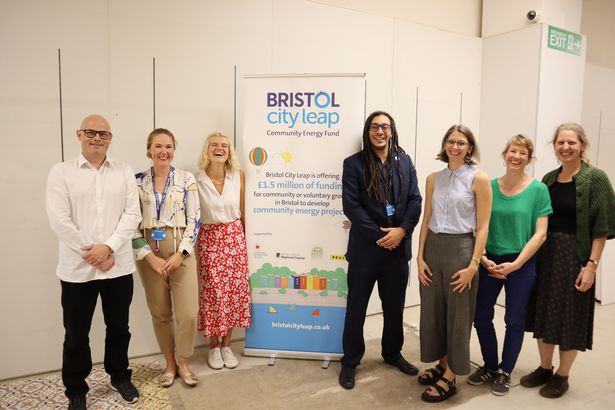 Bristol City Leap
Bristol City Leap
A training session for members of the new audit committee saw councillors ask about City Leap. “We mentioned that we felt that we didn’t have the necessary oversight of City Leap to be able to judge what the consequences of the failure of the project would be,” said one audit committee member, Cllr Jonathan Hucker (Con, Stockwood).
“From a governance perspective, I feel uncomfortable about that, being on the audit committee. We did ask for a briefing to be arranged, so that we could actually understand the risk associated with City Leap, and what the consequences would be of the failure of the City Leap project, because I don’t think we have visibility of that,” he added.
The council’s monitoring officer told councillors that, because City Leap involved a private company – albeit with the council owning a 50 per cent share with Ameresco – things were ‘commercially sensitive’.
“All the risks would have been identified and built into the original decision around that, there will be individual project risks that will be managed on an individual basis, in line with our risk management framework. Given the commercial nature of that arrangement, I don’t think there will be a public report about that,” he said.
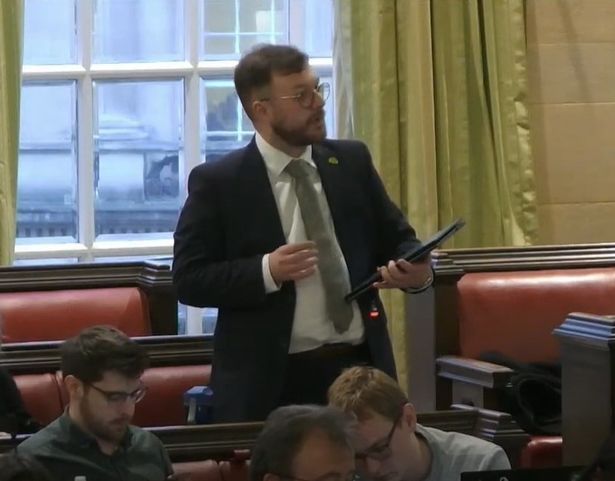 Councillor Ed Fraser (Green, Eastville)(Image: Bristol City Council)
Councillor Ed Fraser (Green, Eastville)(Image: Bristol City Council)
Even the Green Party councillors, who naturally back the City Leap’s aims and ambitions, are concerned. “I’m really surprised to hear that it isn’t appropriate to bring City Leap and effective scrutiny of the risks that affect that to this committee, given the financial value of that project and the massive impact it can have and hopefully will have in positive ways,” said Cllr Ed Fraser (Green, Eastville). “The risks in that are quite significant, so I find it baffling to hear that,” he added.
Despite being a nominally council initiative, councillors are often the last to know. When Bristol Live broke the news about the solar farm plan at Withywood, It was the first Cllr Kirsty Tait (Lab, Hartcliffe & Withywood) knew about it.
READ MORE: Calls for huge South Bristol solar farm to be scrapped – before full plans even revealedREAD MORE: Plans for new solar farm plan brings ‘losing the use’ concerns
“As the councillor, I’ve not had any involvement in that,” she noted at a recent council meeting. “That came out without that. There’s also been some social media outcry from the residents. It’s a space in which horses were kept. People would really like to see it on roofs,” she said.
Bristol has been burned before, of course. Back in the 2010s, the city council set up its own energy company, Bristol Energy, which eventually collapsed losing the council – and ultimately taxpayers – an estimated £42 million.
Many said the idea was flawed from the start – the notion that Bristol could enter the turbulent and competitive energy retail market and succeed. In fact, even from the start of that doomed project, many said Bristol Energy should only have been an electricity generating company, rather than one that sold electricity to domestic consumers.
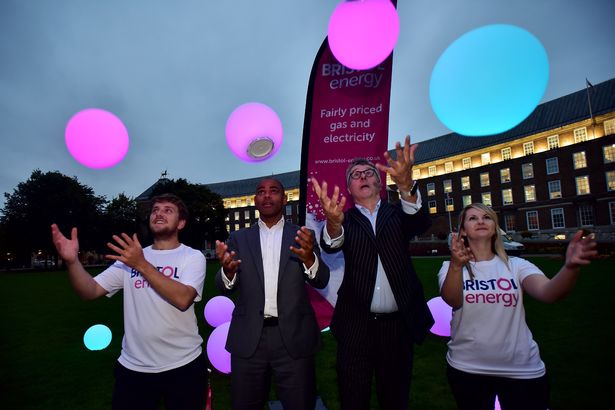 Bristol Energy(Image: Bristol Live)
Bristol Energy(Image: Bristol Live)
That is, in a roundabout way, what City Leap is now – finding ways to use the council’s vast land and building portfolio to generate renewable energy. Except this time, it is Ameresco doing the generating and selling.
For City Leap itself, the project is already proving a huge success – and for James Sterling, much of the proof of that comes in the fact that other cities are seeing the successes City Leap is having, and wanting to do something similar.
Places like Glasgow, Leeds, York and Bristol are all competing for Government and other grants to multi-million projects like decarbonising council homes or creating renewable energy sites, but Bristol is ‘a step ahead’ in getting those grants, James said.
“The Government like to give money to places and projects where they know it will be spent and make a difference,” he said. “We’ve already shown that, and we’ve got this City Leap model which the Government know works. Those other cities are already looking to set something similar up there, and they are asking us for advice on how to do it,” he said.
